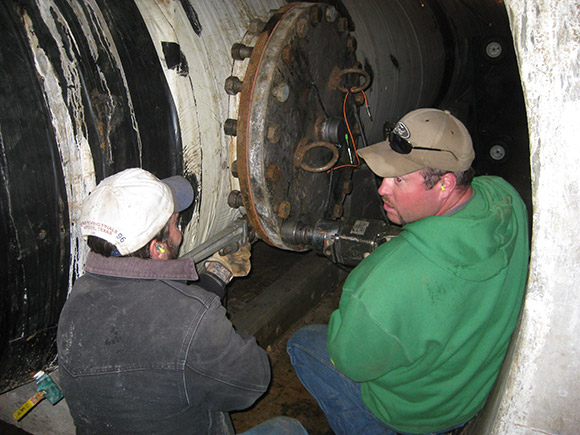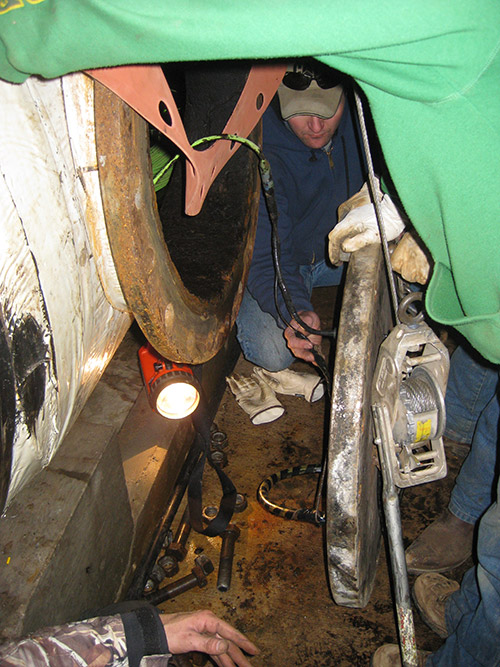Inspection of a Dam Intake and Outlet Works Upstream and Downstream of a Spherical Valve
Hibbard Inshore was hired by a large engineering firm to inspect the intake and outlet piping of an embankment dam where access to the piping would need to be made through a blind flange in the dam control room in order to avoid a major project of removing trash racks from the intake structure which was underwater out in the reservoir. The trash rack removal would have required a commercial dive team, heavy equipment, and a longer outage period to allow access to the piping. Because the customer wanted to avoid the extra outage time and the extra costs that would entail, they determined it would be best to find an ROV company who could work with them to develop a solution to access the pipe through the blind flange. This meant that the ROV umbilical would need to pass through the flange during operations as the intake and outlet piping was reflooded and came under pressure. Once the pipe was flooded, the ROV would need to make a 600’ inspection run upstream through the spherical valve to inspect the pipe as well as a run in the downstream direction of similar length.

Due to the size of the 24” blind flange and the length of the inspection run, Hibbard Inshore elected to use its LBV600-6 ROV which was moved through the tunnel to the control structure room containing the spherical valve. There, a replacement blind flange was supplied by the customer with holes drilled for the installation of an electrical watertight connector and an optical watertight connector both supplied by Hibbard Inshore. The ROV tether was modified at the control console end to mate to watertight connectors. An adaptor to connect the wires on the dry side of the blind flange to the control console was also fabricated. The tether was placed into the outlet piping behind the blind flange with 600’ of slack. The 600’ was looped downstream of the access. The ROV hull was placed inside of the pipe facing the spherical valve and the blind flange was replaced. There wasn’t any leakage past the spherical valve.

The ROV was placed facing the spherical valve so the filling progress and the effect of the filling on the tether could be monitored. This process was recorded with the video. Initially the spherical valve was opened only a small amount to the point where some water was entering the pipe. The initial velocity of the water past the ROV was high because the water depth was low. As the pipe was filled closer to half full the valve was opened further to increase the fill rate. The deeper water kept the velocity past the ROV to a manageable level.
Once the pipe was full, the spherical valve was completely opened. In the open position, it was observed that the valve didn’t have any gaps or offsets in the seals. The ROV swam upstream counting joints upstream of the spherical valve and made observations on the concrete coating. The ROV was also able to inspect the inside of the trash rack with each face of the trash rack followed to look for debris or bent bars. The LBV ROV was able to complete the entire inspection of the intake and outlet works through the blind flange. Upon completion of the inspection, the ROV tether was pulled by the ROV downstream of the spherical valve at which time the valve was closed, the pipe drained, and the vehicle was removed from the line by removing the blind flange. This method allowed the customer to successfully avoid the larger and more time consuming trash rack removal process and still achieve a successful inspection.

